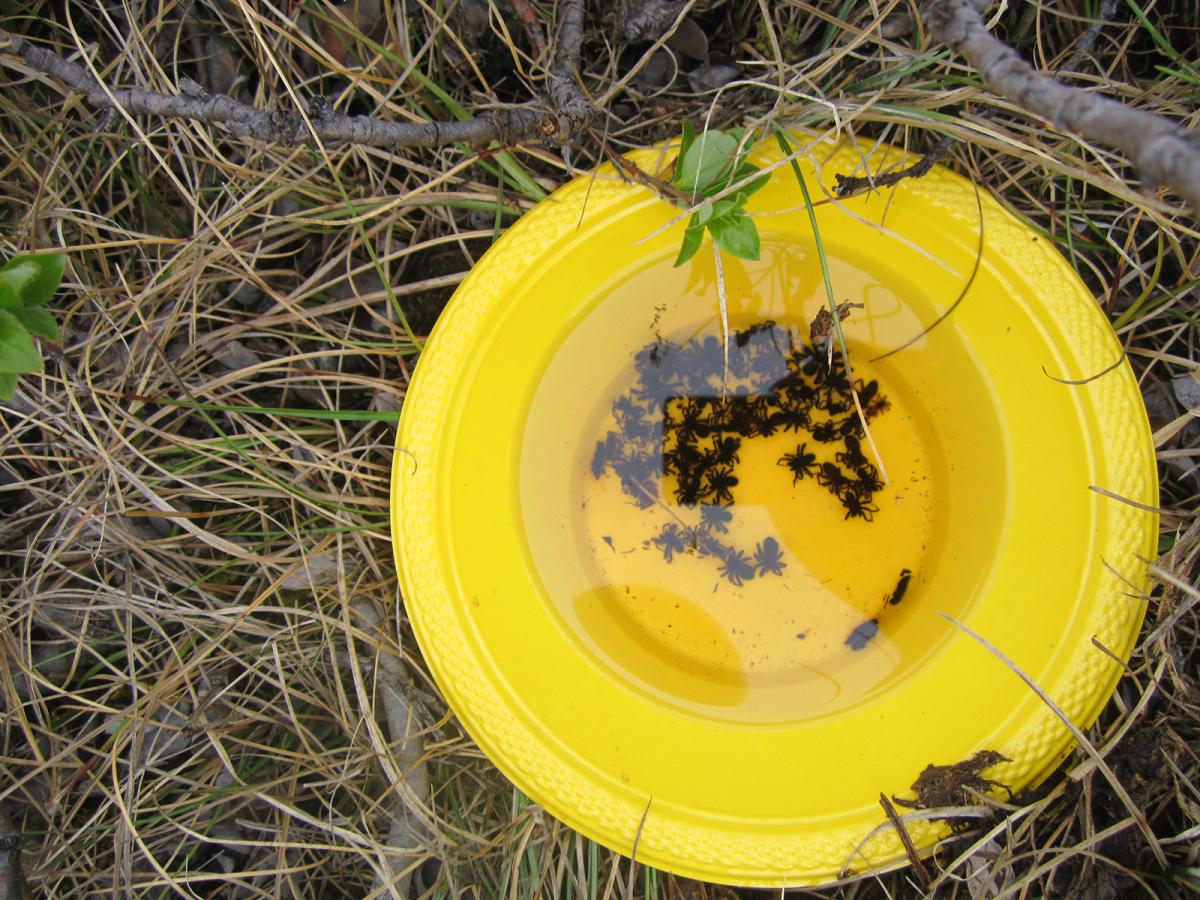The North’s most iconic wildlife, such as polar bears, caribou and snowy owls, could not survive without the smallest and least familiar of the region’s creatures. And while they’re not well understood, insects and spiders (arthropods) are hugely important, says Arctic entomologist Elyssa Cameron.
“They’re pollinators, carnivores, herbivores and decomposers,” she says. “They keep the ecosystem producing and recycling the nutrients that Arctic plants and animals depend on.” But even basic information — something as simple as where and when to find specific species — is lacking.
Cameron, who recently completed a Master’s degree at McGill University, is helping fill in the blanks. She’s also helping lay the groundwork for long-term arthropod monitoring that will bring new understanding of the effects of climate change on the Arctic environment.
For her Master’s research and as part of a Polar Knowledge Canada study, Cameron collected arthropods in Cambridge Bay, Nunavut. Her traps of choice were yellow party bowls placed in the ground — innocent in appearance but a fatal attraction for flying insects.
“In one summer,” she says, “I got over 80,000 individuals — spiders, mites, springtails, flies, butterflies, moths, bees, wasps, beetles — pretty much everything you can find in the North.”
Cameron identified each one and its job in the ecosystem — pollinator, decomposer, carnivore and so on. This information is crucial, because regardless of geographical location, Arctic arthropods perform the same functions and can often live in similar kinds of habitats. Arthropod habitats can be very small, sometimes just a few square metres in area, and information from representative habitats can be extrapolated to build a picture of what is happening on the ground across the Arctic.
“We’ve learned that arthropods are very specific in terms of where they decide to live,” says Cameron. “A wet habitat will have a higher proportion of decomposers than a dry habitat, and a different food web structure, even though the two habitats may be only 10 metres apart. Also, arthropods found at the beginning of the season are not the same ones as at the end: they’ve been replaced by other species. If you want to get a true picture of the arthropod community you have to keep sampling them throughout the season.”
Cameron’s research is helping develop a solid and accurate method for monitoring Arctic arthropods. This summer she will travel back to Cambridge Bay to set up the season’s monitoring sites, and northern students working for Polar Knowledge Canada will look after the sampling.
“In the Arctic environment everything is linked,” Cameron emphasizes, “from polar bears right down to the smallest insects. What we learn from arthropods will give us a better idea of how to address climate change and other environmental issues. We’ll be able to make better use of our resources and management practices, and ultimately we’ll be able to make better recommendations for conservation in the future.”
 |
 |




















